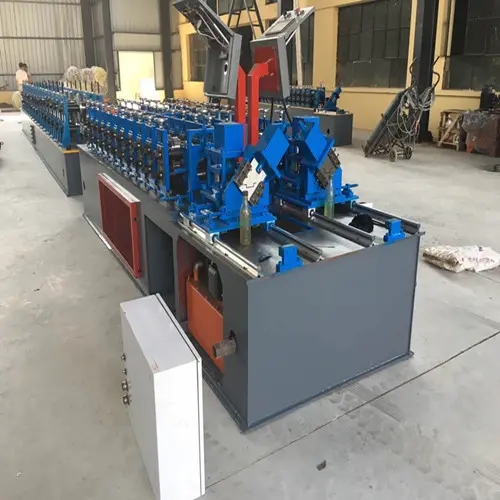
Metal Roof Panel Roll Forming Machine Revolutionizing Construction
In the ever-evolving construction industry, efficiency, durability, and cost-effectiveness are paramount. One of the most significant innovations contributing to these goals is the metal roof panel roll forming machine. This advanced piece of machinery has transformed how roof panels are manufactured, allowing for faster production times, reduced labor costs, and superior-quality roofing materials.
Understanding Roll Forming Technology
Roll forming is a continuous bending process in which a long strip of metal is passed through a series of rollers. Each roller gradually shapes the metal into a desired cross-sectional profile. This technique is particularly advantageous for producing long lengths of consistently shaped products, making it ideal for roof panels that require precision and uniformity.
The metal roof panel roll forming machine typically consists of several key components, including a decoiler, forming stations, a cutoff mechanism, and a control panel. The decoiler feeds the metal coil into the machine, where it is shaped progressively along the forming stations. Once the panel reaches the required length, the cutoff mechanism trims it accordingly.
Advantages of Using a Metal Roof Panel Roll Forming Machine
1. Efficiency and Speed One of the primary benefits of using a roll forming machine is the speed at which it operates. The continuous process allows for high-volume production, reducing the time taken to manufacture roof panels significantly. This efficiency translates to quicker project turnaround times, making it a preferred choice for contractors and builders.
2. Customization and Versatility Metal roof panel roll forming machines can produce a wide range of panel profiles and sizes. This flexibility enables manufacturers to cater to various architectural styles and project specifications. Additionally, by adjusting the rollers, operators can easily switch between different panel designs, making the machine an economical choice for businesses.

3. Material Savings Roll forming minimizes waste by utilizing the entire width of the metal coil, leaving little to no scrap material. Furthermore, the precision of the machine ensures that every cut is accurate, further reducing excess material and contributing to overall cost savings.
4. Durability and Strength Metal roofing is well-known for its longevity and resistance to severe weather conditions. The panels produced by roll forming machines are typically made from high-quality materials, like galvanized steel or aluminum, ensuring that the roofs can withstand the test of time.
5. Reduced Labor Costs Automation in the roll forming process means that fewer workers are required to operate the machinery compared to traditional manufacturing methods. This decrease in workforce not only cuts labor costs but also allows skilled laborers to focus on more specialized tasks.
Applications of Metal Roof Panel Roll Forming Machines
The applications of metal roof panel roll forming machines are diverse and extensive. They are widely used in residential, commercial, and industrial roofing projects. From residential homes to agricultural buildings, warehouses, and large commercial complexes, the versatility of metal roofing makes it suitable for numerous applications. Additionally, the machines can produce panels for siding and other architectural elements, further broadening their utility.
Conclusion
In conclusion, the metal roof panel roll forming machine represents a significant advancement in the construction industry. With its ability to produce high-quality, durable roofing panels quickly and efficiently, it has become an essential tool for manufacturers. As the demand for sustainable and resilient building solutions continues to grow, the role of roll forming machines will undoubtedly expand, enhancing the way we approach roofing and construction as a whole. Embracing this technology not only streamlines production but also supports the industry's shift towards more sustainable practices, ensuring a bright future for construction and architecture.